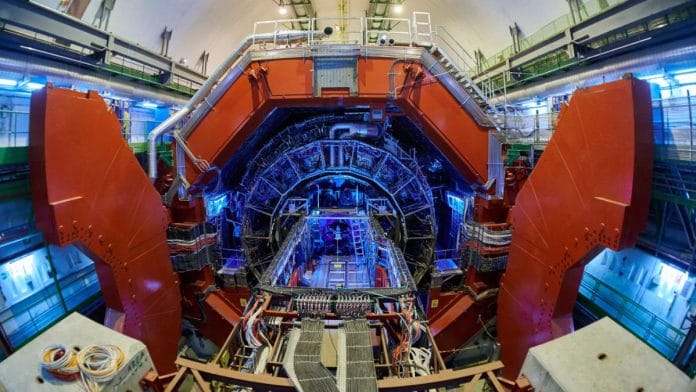New Delhi: CERN’s announcement on May 8 that its Large Hadron Collider (LHC) can turn lead to gold was the Holy Grail for alchemists from the middle ages. This is the biggest discovery since the ‘god particle’ (Higgs Boson) and the ‘beauty particle’ (bottom quark).
Scientists observed a real-life transmutation of lead into gold through a new mechanism involving near-miss interactions between atomic nuclei. But each of these gold particles is the size of a nucleus, and lasted barely a second before being destroyed in the collider.
During the LHC’s second run between 2015 and 2018, around 86 billion gold nuclei were created from smashing lead atoms at 99.999993 percent the speed of light.
“It is impressive to see that our detectors can handle head-on collisions producing thousands of particles, while also being sensitive to collisions where only a few particles are produced at a time, enabling the study of electromagnetic ‘nuclear transmutation’ processes,” said Marco Van Leeuwen, ALICE (A Large Ion Collider Experiment) spokesperson, in a statement.
ThePrint explains the science behind the magic.
Also Read: Search for an Indian Carl Sagan is on. Science influencers are being trained in labs and likes
How it was done
CERN caught the gold bug back as a side quest nearly two decades ago while working on the fundamental particles (smallest known building blocks of the universe) and forces (four forces of nature responsible for how matter behaves), when it started running the LHC. During the second run, the LHC produced 29 picograms of gold. A picogram is one trillionth of a gram.
In the third run, which has been operational since 2022, the amount produced was almost double that of the second run but trillions of times less than what would be required to make a piece of jewellery.
The third run, which will continue till 2026, has higher collision energy compared to its second run, improved detector performance, and collected more data.
The detector’s zero degree calorimeters (ZDCs) counted photon–nucleus interactions that led to the emission of zero, one, two or three protons, along with at least one neutron.
ZDCs—which are specialised calorimeters used to detect and measure very small particles or radiation—are associated with the production of lead, thallium, mercury and gold.
“While less frequent than the creation of thallium or mercury, the results show that the LHC currently produces gold at a maximum rate of about 89,000 nuclei per second from lead–lead collisions at the ALICE collision point,” the CERN statement read.
A flash of gold
The gold nuclei emerged from the collision with very high energy and hit the LHC beam pipe or collimators (devices that shape or direct beams of light or radiation to narrow them or limit their speed) at various points downstream, where they immediately fragment into single protons, neutrons and other particles.
In this form, the gold exists for just a tiny fraction of a second.
“Thanks to the unique capabilities of the ALICE ZDCs, the present analysis is the first to systematically detect and analyse the signature of gold production at the LHC experimentally,” said Uliana Dmitrieva of the ALICE collaboration in a statement.
The biggest discovery that came from LHC was the Higgs Boson in 2012. The discovery provided evidence of how particles gain mass, proving the existence of the Higgs Field, which is key to the Standard Model of particle physics.
However, in recent years, scientists have questioned the lack of any big discovery from the LHC.
Also Read: 47 yrs ago, this Indian-origin physicist asked Feynman a question. He hasn’t looked back since






